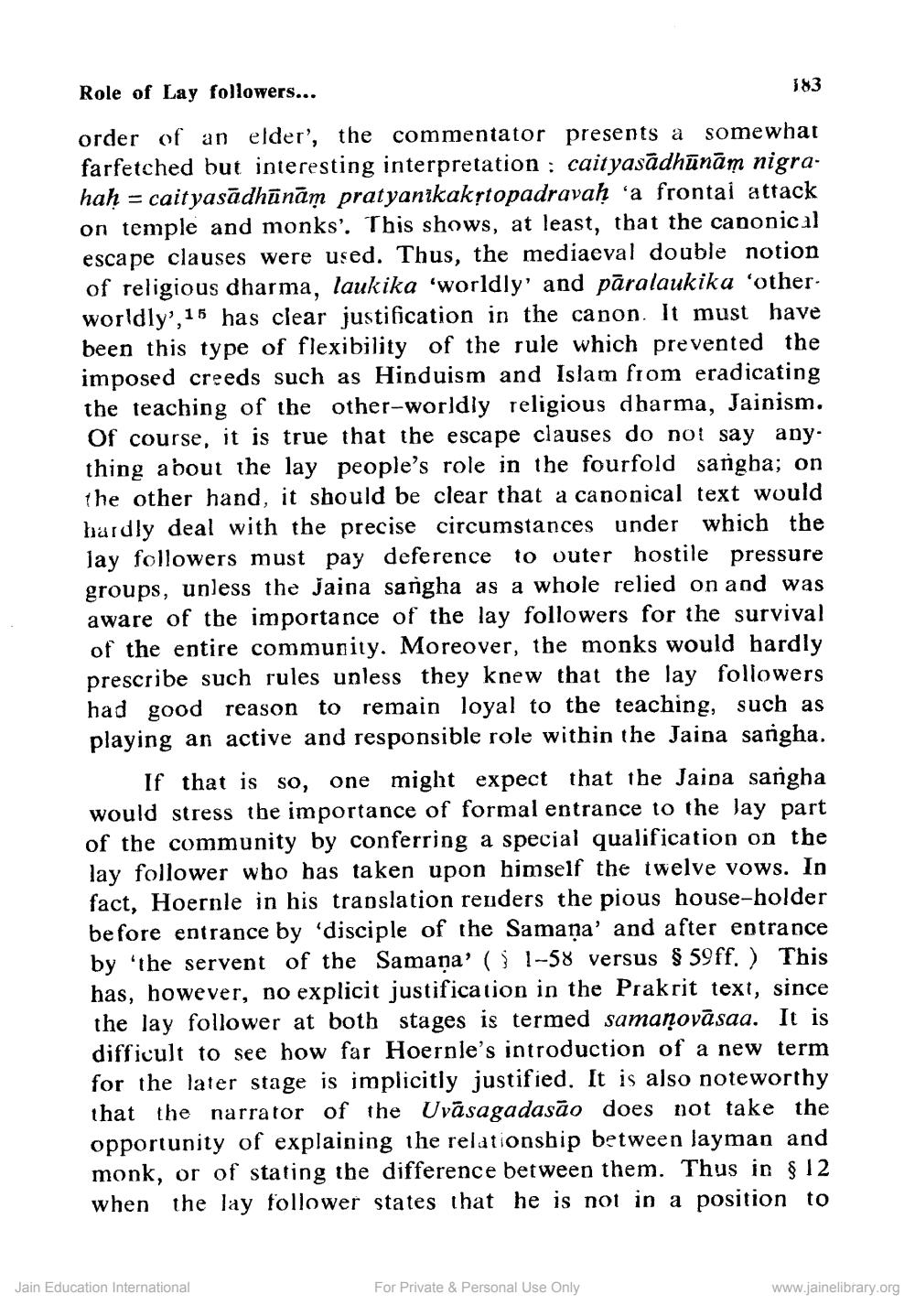________________
Role of Lay followers...
183
order of an elder', the commentator presents a somewhat farfetched but interesting interpretation : caityasādhūnām nigrahah = caityasādhūnām pratyanikakstopadravah 'a frontal attack on temple and monks'. This shows, at least, that the canonical escape clauses were used. Thus, the mediaeval double notion of religious dharma, laukika 'worldly' and pāralaukika 'other. worldly', 15 has clear justification in the canon. It must have been this type of flexibility of the rule which prevented the imposed creeds such as Hinduism and Islam from eradicating the teaching of the other-worldly religious dharma, Jainism. Of course, it is true that the escape clauses do not say any. thing about the lay people's role in the fourfold sangba; on the other hand, it should be clear that a canonical text would hardly deal with the precise circumstances under which the lay followers must pay deference to outer hostile pressure groups, unless the jaina sangha as a whole relied on and was aware of the importance of the lay followers for the survival of the entire community. Moreover, the monks would hardly prescribe such rules unless they knew that the lay followers had good reason to remain loyal to the teaching, such as playing an active and responsible role within the Jaina sarigha.
If that is so, one might expect that the Jaipa sangha would stress the importance of formal entrance to the lay part of the community by conferring a special qualification on the lay follower who has taken upon himself the twelve vows. In fact, Hoernle in his translation renders the pious house-holder before entrance by 'disciple of the Samana' and after entrance by the servent of the Samana' ( 1-58 versus 59ff.) This has, however, no explicit justification in the Prakrit text, since the lay follower at both stages is termed samanovāsaa. It is difficult to see how far Hoernle's introduction of a new term for the later stage is implicitly justified. It is also noteworthy that the narrator of the Uvāsagadasāo does not take the opportunity of explaining the relationship between layman and monk, or of stating the difference between them. Thus in $ 12 when the lay follower states that he is not in a position to
Jain Education International
For Private & Personal Use Only
www.jainelibrary.org




